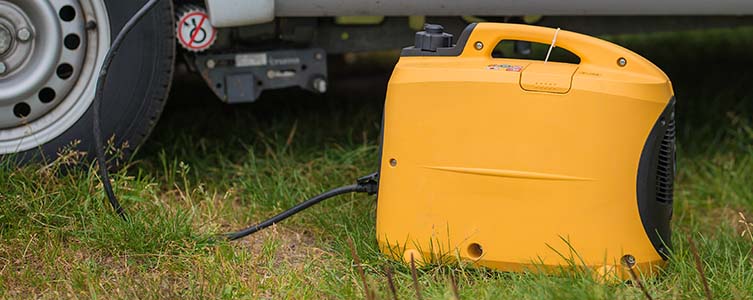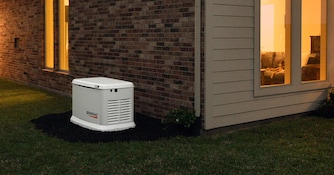
Powering Your Food Truck Business
Do you have what it takes to start a food truck business? Industry veterans will tell you that, aside from a propane tank, a food truck generator powers your entire operation. Having the best generator for your food truck will help keep revenue flowing in this lucrative industry.
If you’re thinking of relying on local shore power for your food truck, consider that, if the power ever goes out, you won’t have a backup. Worse yet, if your competitor came prepared with his own generator and you didn’t, say goodbye to that payday.
Food Truck Generators: What to Look For
You’ll want to consider the following characteristics when shopping for your food truck generator.
Power
The most important question to answer is how much you need to power. This all depends on what you’re cooking, of course, but most food trucks will need to power a microwave, fridge, and undercounter freezer. However, you may have an espresso machine, deep fryer, and other types of electric-powered equipment.

Start by adding up the required wattage of every appliance you’ll be running at the same time. If you are powering anything with a motor, you will also need to consider starting wattage, which is the extra boost of power an electric motor needs to start. We have a free generator wattage calculator tool you can use to arrive at a power needs estimate.
Also, make sure that the generator’s voltage meets your food truck's voltage requirements. The voltages you'll typically see are 120V or 240V. More demanding appliances like deep fryers may require 240V.
Type
When selecting a generator for your food truck, there are three routes you can go.
- Open-frame portable generators are the traditional, least-expensive option that pack serious power into one unit. The downsides are their weight, noise, and inability to safely charge sensitive electronics like laptops or smartphones.
- Portable inverter generators are quiet, lightweight, sleek, and provide clean power for sensitive electronics. These extra benefits come with a higher price tag, however. Also, they are generally less powerful than their open-frame counterparts, but you can parallel or combine two for extra power.

- Built-in Food Truck generators are recommended if your truck is large enough to have a generator compartment. These are the same types of generator that would go inside an RV compartment. They also provide the most power if that is what you need for your business. Just make sure you have the space for them and that you’re not wasting money buying more power than you need unless you plan to eventually upsize.
Noise
As mentioned, traditional open-frame portable generators are loud. If your generator is above a certain decibel range, your food truck may be barred from places or events that have noise limits.
To minimize noise, go with either an inverter generator or a built-in food truck generator. They’re more expensive but at least your customers won’t have to cover their ears!
Fuel
If you go the open-frame or inverter generator route, you will need to manually refuel to stay running. A built-in food truck generator, on the other hand, connects directly to your truck’s fuel tank.
If you're installing a generator that will have its own dedicated fuel tank (such as a trailer or diesel vehicle utilizing a gasoline generator), you must install an EVAP generator to meet standards. This is no joking matter. According to new emissions standards, if an EVAP generator is required, and an audit reveals a standard generator is installed, the fines can begin as high as $39,000.
These emissions (EVAP) standards apply not only to the generator, but to all fuel system components, including the fuel tank, fuel lines, clamps, vapor canister, and so on. Even if you have an old trailer that requires a new generator with a dedicated fuel tank, it must be converted (along with all its components) to meet the EVAP standards.
Exhaust
In addition to being careful to provide ample air flow to and from the generator, it's also important to install a proper exhaust system. Ventilation and exhaust are important for two major reasons.
The first reason is safety. You don't want exhaust seeping into the food truck through the windows and subjecting occupants to carbon monoxide poisoning, but you also don't want the generator to overheat. Proper air flow will keep the generator cool enough to operate safely, so don't close the storage compartment to hide the generator while it's in operation. Leave it open and let it vent.
Installing Your Food Truck Generator
Using a portable generator is straightforward, and you can check out our generator quick start guide for details.
If you’re going the built-in generator route, that involves hardwiring. Due to safety concerns, we recommend you have that type of generator installed by a professional. There is mechanical and electrical work that requires a bit of experience.
DO NOT install your generator in the interior of your food truck. Generators produce carbon monoxide, so be sure it's installed in a well-ventilated location. Some generators tend to get hot as well, so be sure anything in the installation area is heat resistant and non-flammable.
Power Your Food Truck Dream
Compared to a traditional restaurant, the initial investment to start a food truck is low. A reliable food truck generator is one of the major components that could get you on the road and serving your customers!





